Off-Axis Parabolic Mirrors and the Angle Between Optical and Focal Axes
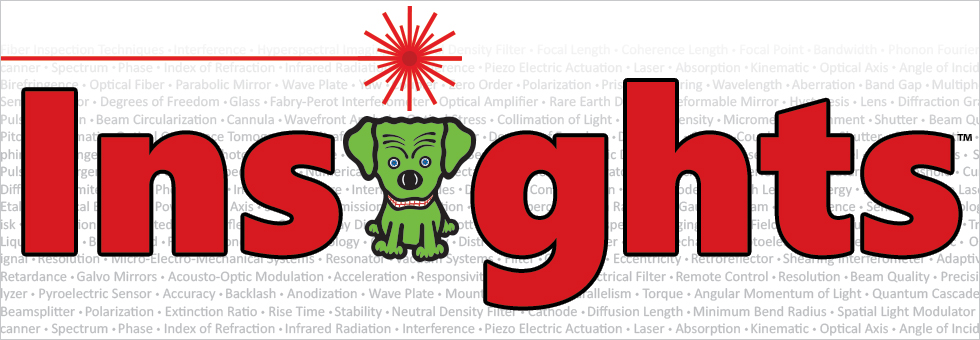
The Off-Axis Angle
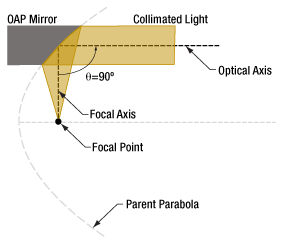
Click to Enlarge
Figure 2: One section of the parent parabola provides a 90° off-axis angle.
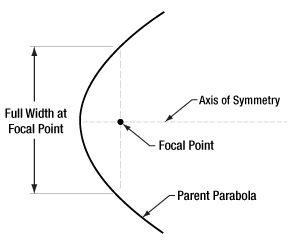
Click to Enlarge
Figure 1: It is common to measure the width of the parabola with respect to a line that passes through the focus and is perpendicular to the axis.
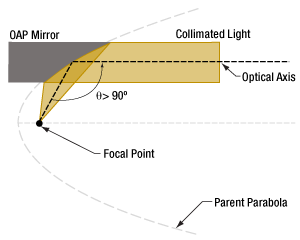
Click to Enlarge
Figure 4: Decreasing the width of the parabola increases the off-axis angle. For example, compare this illustration with Figure 2.
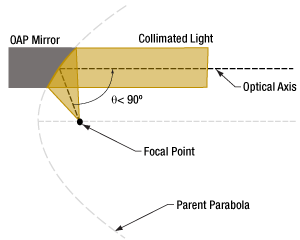
Click to Enlarge
Figure 3: Choosing a section closer to the axis of the parabola results in a smaller off-axis angle.
The off-axis angle ( θ ) of an OAP mirror is measured between the mirror's optical and focal axes. The angle depends on the segment of the parent parabola used for the OAP mirror, as well as the width (Figure 1) of the parent parabola. The OAP mirror in Figure 2 has a 90° angle.
Proximity of Parabolic Segment and Focal Point
Choosing a segment of the parent parabola closer to the focal point reduces the off-axis angle. The mirror in Figure 3 has a smaller angle than the one in Figure 1, but the only difference between them is that the section of the parabola selected for the OAP mirror in Figure 3 is closer to the focal point.
The location of the parabolic segment also controls the focal length. Choosing a parabolic segment closer to the focal point results in a shorter distance between the center of the mirror and the focal point.
Width of the Parent Parabola
Increasing the width of the parent parabola decreases the off-axis angle. This inverse relationship is illustrated by Figures 3 and 4. The width of the parabola is larger in Figure 3, and this is also the mirror with a smaller angle.
The width of the parent parabola also affects the focal length. The wider the parabola, the longer the focal length.
Available Off-Axis Angles
OAP mirrors are often designed to have a 90° off-axis angle, but OAP mirrors with angles less than 90° are also common.
|
Looking for more Insights? |
Date of Last Edit: Dec. 4, 2019 |
| Posted Comments: | |
| No Comments Posted |
 Products Home
Products Home
 OAP Mirror Output Angle
OAP Mirror Output Angle